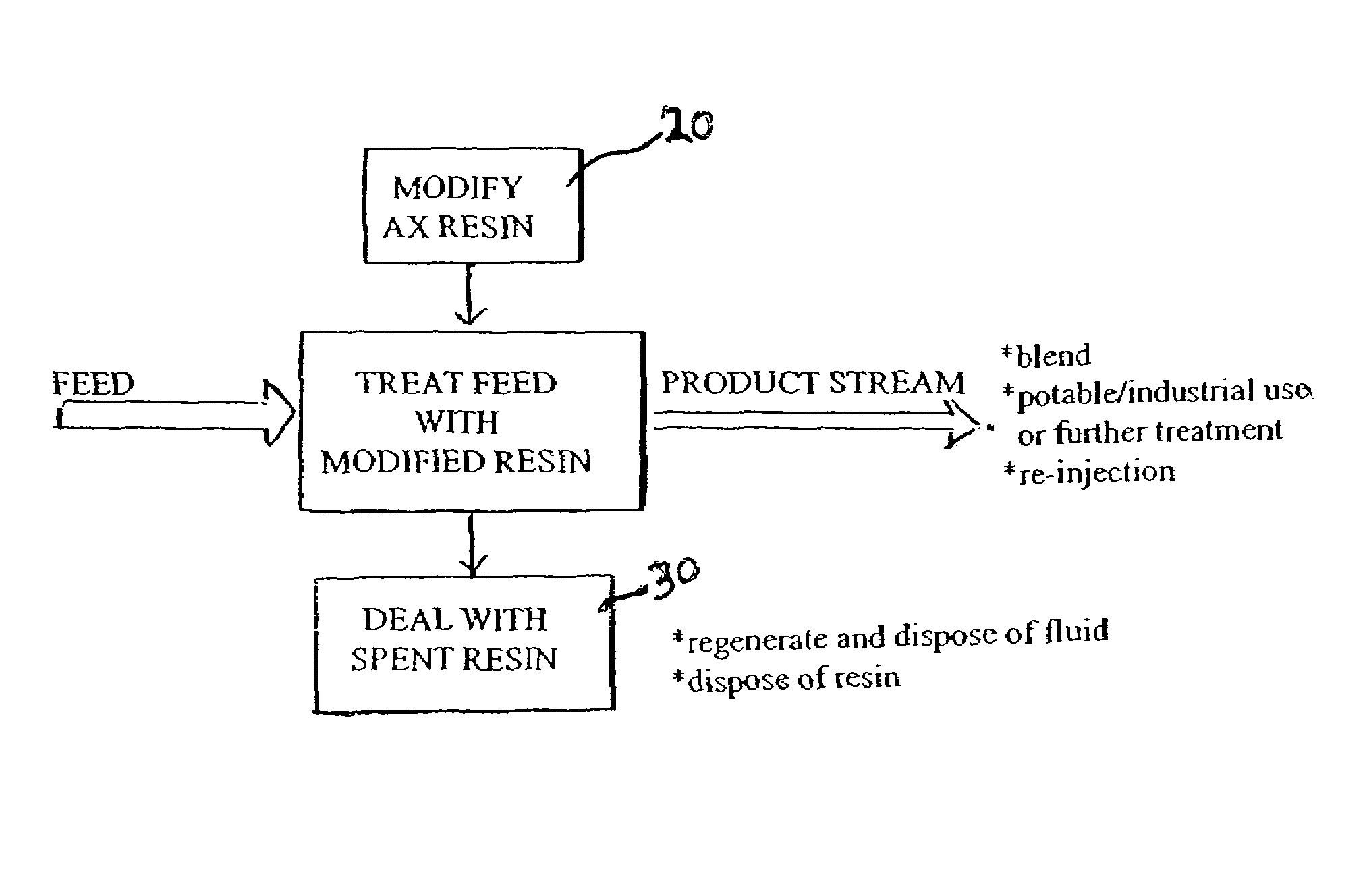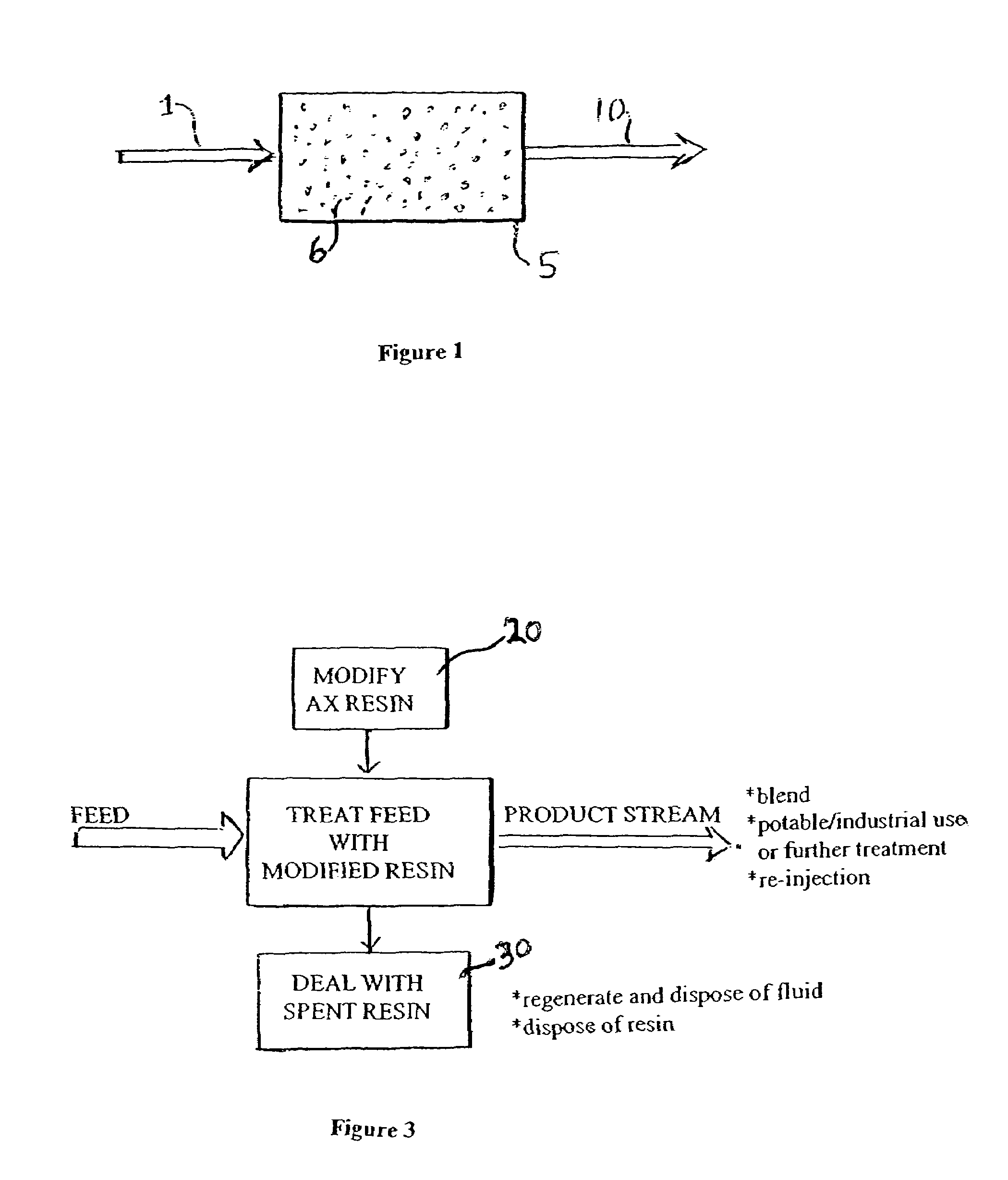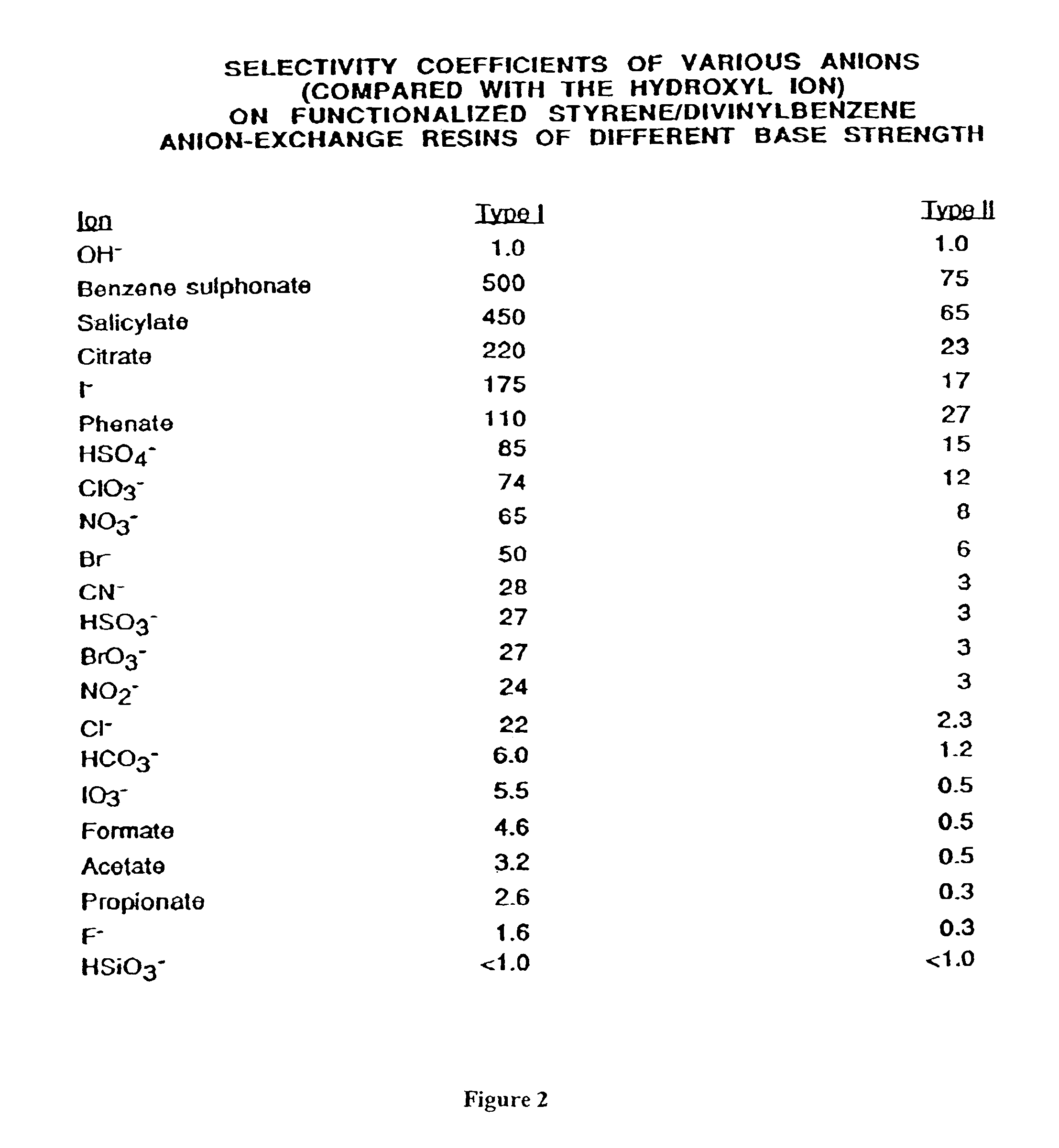Water treatment/remediation system
a technology of water treatment and remediation system, applied in water/sewage treatment by ion exchange, ion exchanger, chemistry apparatus and processes, etc., can solve the problems of undeveloped uptake and long-term risk modeling, waste stream having existing contaminants concentrated many-fold over source water, and permits for continuing such disposition may not be available in the future. , to achieve the effect of regenerating resin, reducing the amount of perchlorate waste, and minimizing the amount of perchlora
- Summary
- Abstract
- Description
- Claims
- Application Information
AI Technical Summary
Benefits of technology
Problems solved by technology
Method used
Image
Examples
Embodiment Construction
[0031]FIG. 1 illustrates a basic embodiment of a water treatment system, or a stage of a water treatment system of the present invention. A source water 1, which may be a contaminated ground water, a waste stream containing contaminant, or a pretreated or an intermediate product or waste stream of a treatment plant, is passed through an ion exchange bed 5 containing anion exchange material 6 to selectively remove perchlorate ions and produce a treated stream 10 of lesser perchlorate concentration.
[0032]In accordance with a principal aspect of the invention, the exchange material has been placed in a form that substantially prevents capture of natural co-ions present in the source, and assures that the perchlorate is selectively and substantially captured by the resin. Preferably the anion exchange material is a strong base anion exchange material, such as Dowex 1, Marathon MSA or other readily available and inexpensive exchange material, and this resin is placed in sulfate form. In ...
PUM
| Property | Measurement | Unit |
|---|---|---|
| detection limits | aaaaa | aaaaa |
| concentrations | aaaaa | aaaaa |
| concentration | aaaaa | aaaaa |
Abstract
Description
Claims
Application Information
 Login to View More
Login to View More - R&D
- Intellectual Property
- Life Sciences
- Materials
- Tech Scout
- Unparalleled Data Quality
- Higher Quality Content
- 60% Fewer Hallucinations
Browse by: Latest US Patents, China's latest patents, Technical Efficacy Thesaurus, Application Domain, Technology Topic, Popular Technical Reports.
© 2025 PatSnap. All rights reserved.Legal|Privacy policy|Modern Slavery Act Transparency Statement|Sitemap|About US| Contact US: help@patsnap.com



